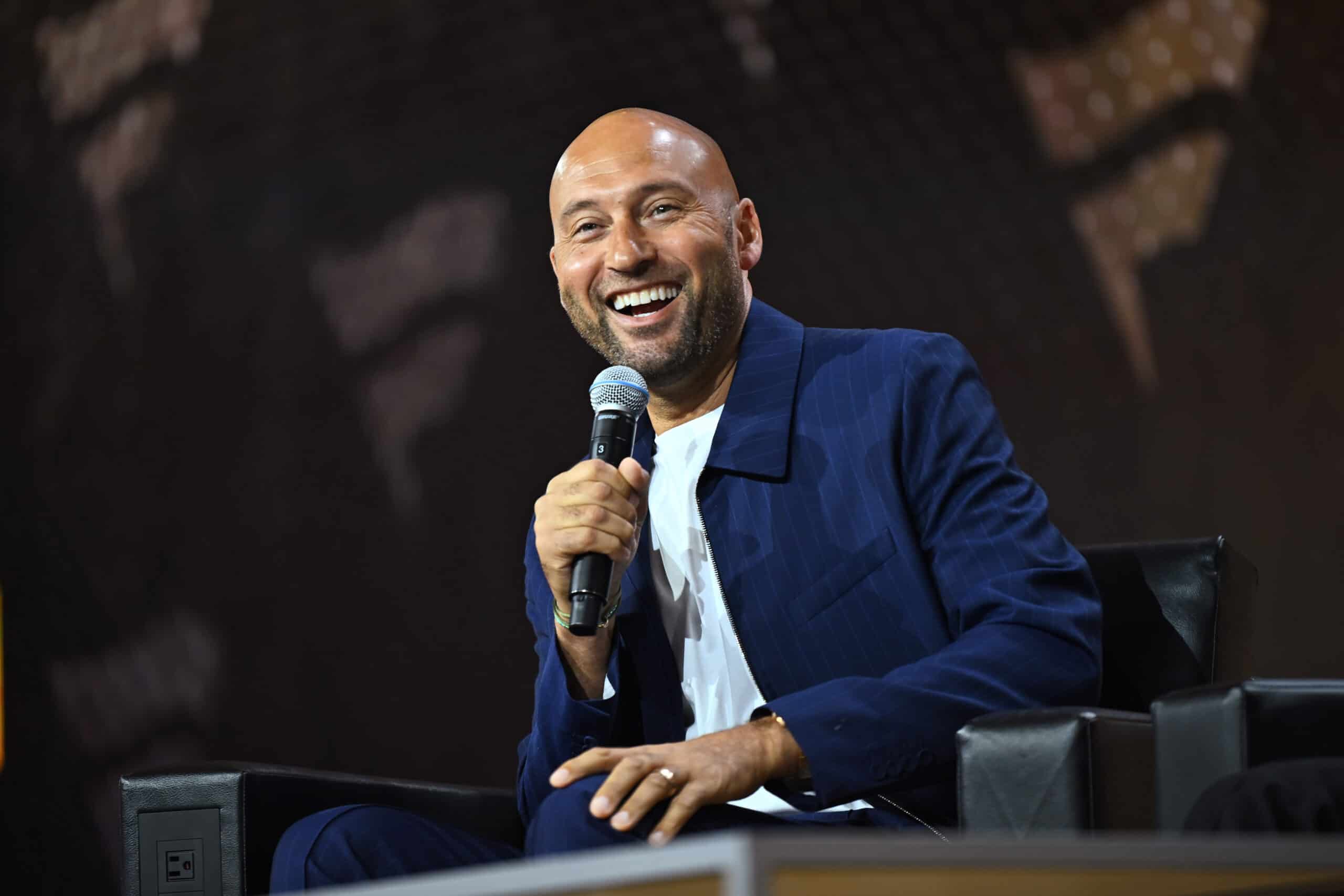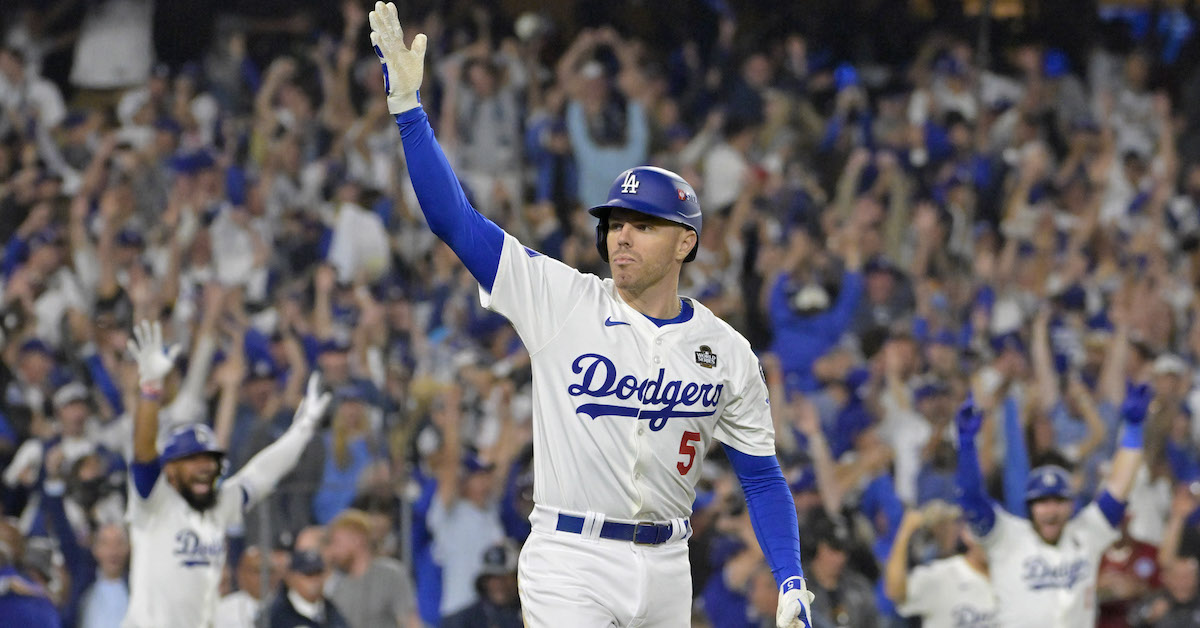[ad_1]
Patrick Gorski-USA TODAY Sports
In the pre-PitchCom era, major league teams had more rigorous protocols for protecting their signs than your bank has for securing your account. It wouldn’t surprise me to learn that some teams’ custom PitchCom audio clips are read in a modified pig latin created by a pitching strategy staffer. That the hitter doesn’t know what pitch is coming is considered a huge advantage for the pitcher. And it’s not only pitchers who think so — just ask the 2017 Astros.
Sign-stealing aside, hitters stand in the box pondering which pitch might come hurtling their way mere seconds later. What that pondering looks like depends on the hitter. There’s Nick Castellanos and his “glorified batting practice” approach, in which he looks for the ball and hits it as hard as he can. But there’s also Carlos Correa, who starts his day studying pitcher tendencies in the video room.
For their part, pitchers set the difficulty level on the hitter’s guessing game. That terms like “fastball count” and “pitching backwards” exist tell us that pitchers follow (and, at times, purposefully upend) conventional tactics to sequence their pitches, and believe that certain pitch types are optimal in certain counts. Strategies become standard practices because they’re effective, but an over-reliance on one or two strategies can lead to predictability. Become too predictable and a pitcher effectively sets their opponents’ guessing game on “easy” mode.
But does making it easy for the hitter to sit on a certain pitch automatically make the overall task of hitting easier? Does keeping a hitter guessing always ensure effective pitching? To figure out how predictability factors into a pitcher’s overall strategy, we need to know which pitchers are setting the guessing game on “beginner” and which pitchers set it on “expert.”
We can measure the difficulty of anticipating a given pitcher by playing a strictly by-the-numbers guessing game and seeing how it goes. Meaning that for each pitcher, if every hitter stepped up to the plate knowing which pitch the pitcher throws most frequently in all possible counts and guessed accordingly, how often would the hitter be correct?
I took the success rates of a hitter using this guessing strategy on each pitcher’s tendencies from this season and mapped those rates to a Predictability Score between 0 and 100, where a score of 100 is the most predictable and a score of 0 is the least predictable. Looking just at pitchers with at least 100 innings pitched so far this season, the top 10 most and least predictable are listed below:
Top 10 Most Predictable Pitchers
1. Patrick Corbin
2. Luis Severino
3. Michael Lorenzen
4. Seth Lugo
5. Dylan Cease
6. Miles Mikolas
7. Hunter Greene
8. Ben Lively
9. Garrett Crochet
10. Mitch Keller
Top 10 Least Predictable Pitchers
1. Justin Steele
2. Joey Estes
3. Sonny Gray
4. Nick Martinez
5. Zack Wheeler
6. Ryne Nelson
7. Cristopher Sánchez
8. Kyle Harrison
9. Ranger Suárez
10. Dean Kremer
The rankings highlight one fairly obvious effect. Pitchers who primarily throw two pitches are far easier to predict than those who throw four or five.
Justin Steele throws 60% four-seam fastballs and 30% sliders, with the other 10% split between his sinker, changeup, and curveball. On the other hand, Seth Lugo throws a proverbial kitchen sink composed of 26% curveballs, 25% four-seamers, 19% sinkers, 13% sliders, 6% cutters, and 6% changeups. And yet, their summary stats are eerily similar:
Player ERA FIP K% BB% ERA- FIP-
Justin Steele 3.09 3.13 24.9% 6.5% 76 78
Seth Lugo 3.19 3.44 20.8% 6.1% 75 83
Though they employ far different tools and strategies, the outcome is similar. The impressive quality of Steele’s slider, paired with solid fastball command, provides other means for him to keep hitters uncertain even if they correctly guess the pitch type. For Lugo, neither of his main fastball offerings grade out particularly well according to Stuff+, so rather than stick to the conventional wisdom that leads most pitchers to throw fastballs at least 50% of the time, he leans on two above-average breakers amid an array of pitches that he locates well and throws in a variety of counts, effectively setting up a god-mode guessing game for the hitter.
But since declaring two-pitch pitchers easy to predict and five-pitch pitchers more of a mystery isn’t exactly revelatory, let’s go ahead and control for the difficulty of the initial challenge, or how many pitches the hitter is guessing between. Instead of looking just at how often a pitcher throws each pitch in each count, I compared the actual frequency to the expected frequency if the pitcher were equally likely to throw any pitch in any count, i.e. maximum unpredictability. Only pitches with a 10% usage rate or higher were included to limit the scope to offerings a hitter would actually need to keep front of mind while in the box. So even though Lugo throws six pitches, the cutter and the changeup don’t get enough play to make the cut.
With that in mind, Lugo is least predictable if there’s a 25% of him throwing any of his four most-used pitches in any count. Taking the absolute difference between his actual count-level usage rates and 25% provides a measure of how far off he is from optimal hitter confusion. Averaging those differences across all counts (weighted by how often he finds himself in each count) and mapping to the same scale used previously gives us a metric for overall comparison across pitchers:
Top 10 Most Predictable Pitchers
1. Patrick Corbin
2. Luis Severino
3. Michael Lorenzen
4. Seth Lugo
5. Dylan Cease
6. Miles Mikolas
7. Hunter Greene
8. Ben Lively
9. Garrett Crochet
10. Mitch Keller
Top 10 Least Predictable Pitchers
1. Nick Martinez
2. Ranger Suarez
3. Dean Kremer
4. Alex Manoah
5. Adam Wainwright
6. Max Scherzer
7. Clayton Kershaw
8. Walker Buehler
9. Jon Gray
10. Joe Ross
In this framing of the question, Andrew Abbott is the most predictable with his 54% four-seamers, 19% sliders, 16
% changeups, and 11% curveballs. Despite his predictability, he rates as above average with an 85 ERA- on the season, though his 116 FIP- casts some doubt on the proceedings and makes an argument for increasing his slider usage, both in the name of keeping hitters guessing and throwing your best pitch more. Lugo still rates well for his lack of predictability, but perhaps more surprising is two-pitch Dylan Cease slotting in at fifth in the rankings. Cease combines to throw his fastball and slider 90% of the time, but remains tough to predict by splitting that 90% usage almost exactly 50-50. Obviously, the key to Cease’s success with just two pitches is that both pitches grade out extremely well, but throwing them equally often and tunneling them out of a consistent release point amplifies the impact.
That said, keeping hitters guessing only goes so far if you have a case of late-career Patrick Corbin on your hands. Meanwhile, even though five-pitch Zack Wheeler is roughly as predictable as three-pitch Freddy Peralta, the volume of information to process on the way to understanding and acting on those tendencies is greater for Wheeler than Peralta. The size and shape of the game planning process varies based on the size of the arsenal.
Since the number of offerings in a pitcher’s inventory sets the initial difficulty level for hitters’ predictions (which they can then toggle up or down based on usage), let’s also look at the raw predictability scores adjusted not for arsenal size, but rather grouped by the number pitches in the utility belt:
Most Predictable by Arsenal Size
Two-Pitch Pitchers
1. Justin Steele – 100
2. Kevin Gausman – 86
3. Hunter Greene – 82
Four-Pitch Pitchers
1. Kyle Harrison – 89
2. Cristopher Sánchez – 88
3. Reynaldo López – 83
Three-Pitch Pitchers
1. Andrew Abbott – 76
2. Joey Estes – 76
3. Albert Suárez – 71
Five-Pitch Pitchers
1. Logan Gilbert – 39
2. Zack Wheeler – 39
3. Sonny Gray – 38
Least Predictable by Arsenal Size
Two-Pitch Pitchers
1. Dylan Cease – 68
2. Shota Imanaga – 76
3. Ryne Nelson – 81
Four-Pitch Pitchers
1. Luis Severino – 25
2. Patrick Corbin – 38
3. Kutter Crawford – 38
Five-Pitch Pitchers
1. Seth Lugo – 0
2. Michael Lorenzen – 6
3. Miles Mikolas – 8
Four-Pitch Pitchers
1. Nick Martinez – 13
2. Ranger Suarez – 14
3. Dean Kremer – 17
Steele and Cease bookend the two-pitch pitchers in terms of prediction success rate, but the gap between Steel and everyone else is in danger of getting sued for trademark infringement by John Fisher. The pitchers in the middle of the two-pitch pitcher leaderboard all situate themselves closer on the spectrum to…
[ad_2]



